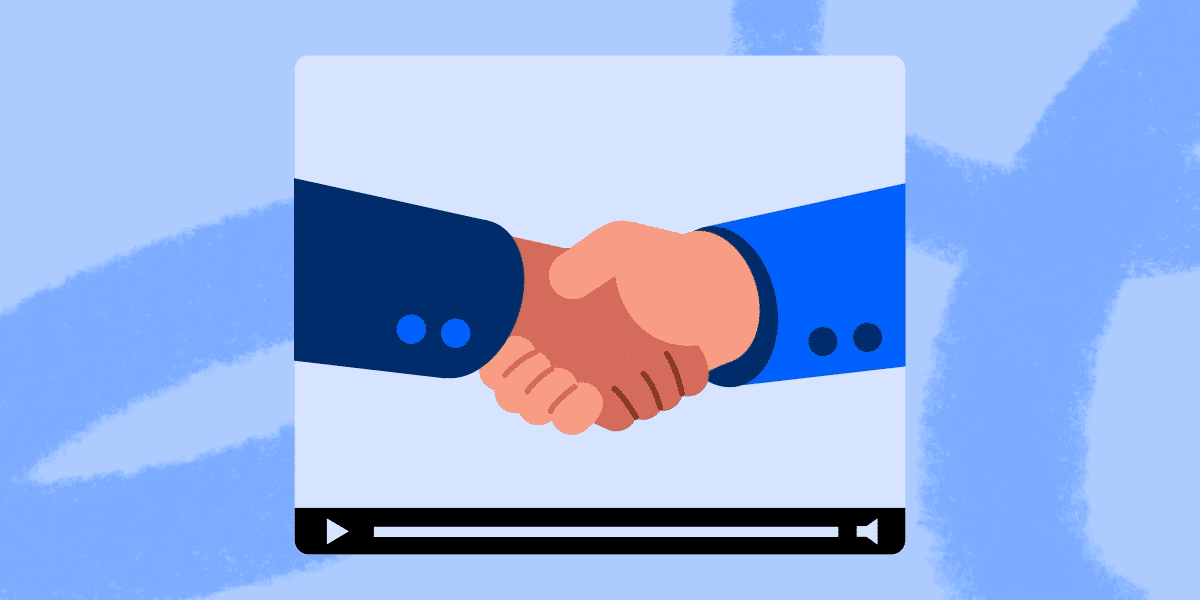Business-to-business (B2B) buying behaviour is always evolving, and the fast adoption of remote-first work has accelerated these changes in recent years.
To navigate today’s B2B landscape, it is vitally important for marketers to take note of learning opportunities from the past and use them to inform their future B2B strategies. B2B marketers also need to understand how B2B and B2C audiences are distinct from each other, so that they can build strategies geared towards the right audience.
Read on to learn 8 B2B marketing tips, covering essential tactics like how you can increase brand awareness among your target accounts, and drive prospects to reach out to your sales team.
B2B Marketing: The Basics
B2B marketing stands for business-to-business marketing. This describes any marketing strategy that is used by one business to market and sell to another business. For example, a SaaS company selling CRM software to businesses, or a company selling medical equipment directly to healthcare facilities would leverage B2B marketing.
An example of a B2B business is a company that sells email marketing tools to digital marketing agencies. These tools aren’t intended for individual consumers–They are designed for use by organizations and businesses, which means they are a B2B product.
8 B2B Digital Marketing Tips
With these emerging trends in mind, B2B marketers can shift their strategies to align with the expectations of B2B buyers. Here are 8 B2B digital marketing tips for programmatic campaigns.
1. Note the Shift to Remote Work
In 2020 employers and employees quickly embraced remote work as a way to keep safe during the pandemic. But, the trend has stuck! Remote work is here to stay. This is in part because employees have responded well to remote work, with many of them appreciating the flexibility that comes with it.
Research found that 61% of employees in the US would like to work from home at least twice per week and only 29% of employees believe they would benefit from being in the office full time.
The shift to remote work means it’s time to rethink how you reach B2B buyers because the environment and habits of these buyers has changed. Professionals who work from home spend more time online and on their devices.
2. Harness The Power of Email
With professionals spending more time at home and at their desks, email is occupying a bigger share of their attention. Email is a highly personalized channel that allows you to communicate directly with your audience.
This makes newsletters an increasingly powerful way to engage with the B2B buyers you’re targeting. Despite the growth of mobile messengers and chat apps, email is an integral part of daily online life. The number of global email users is set to grow to 4.6 billion users in 2025.
Email is a valuable channel because with it, you can let the reader know what action to take next. You have the opportunity to encourage a B2B buyer to not just read the email, but to click through to other content, download ebooks or whitepapers, and get in touch with you.
3. Personalize Your B2B Ad Creatives
In B2B marketing, it’s key to build a personalized creative strategy that speaks to your ideal customer profile and aligns with work-from-home trends.
Your goal is to capture users’ attention with a well-thought-out creative and messaging that highlights how your offering is going to help solve their pain points.
Use ‘ready-to-buy’ signals and firmographic insights to optimize your creative strategies with hyper-relevant messaging. Firmographic insights uncover data about who is buying particular products and who is not buying those products. They can give you a clearer understanding of B2B buyers and market trends.
For example, firmographic insights might tell you that a financial institution’s decision makers are actively researching ‘business intelligence software,’ which signals they are ‘ready-to-buy.’
With this knowledge, you can inform your creative strategy to drive audiences towards a specific action, like downloading an ebook on ‘The Benefits of Data Integration in the Finance Industry.’
4. Leverage Video for B2B Marketing
There are plenty of B2B marketing channels to choose from, like native, display, and audio. One that will help you truly stand out from the crowd? Video.
With video ads you can reach potential customers wherever they may be watching video content online. Video also has the potential to differentiate your brand from others in the B2B space by giving you a way to combine the power of both visuals and audio to communicate your message.
Video ad messaging sticks–Research found that audiences who had viewed video ads in the past week were 26% more likely to remember the product or service being advertised, than those who had viewed a static ad.
According to eMarketer, the spend on video is expected to climb to $74.88 billion USD in 2023. This is more than 20% year-over-year growth, which signals that marketers are increasingly recognizing and investing in the value of video.
With marketers increasingly adopting video advertising, forget about using B2B video marketing in the traditional way. Lean into this format’s unique capabilities to stand out from the crowd and capture the attention of the audiences that matter.
5. Use Programmatic Account-Based Marketing (ABM)
Account-based marketing (ABM) is a B2B tactic that concentrates marketing toward a set of specific accounts within a market.
Traditional ABM has relied on physical-world activities like events where marketers get one-on-one time with the stakeholders at a target company. Traditional ABM works, but personalization at scale for target accounts can be a top challenge.
One way to overcome this challenge is by leveraging the power of programmatic ABM. You can use programmatic ad buying technology to target high-value B2B professionals based on account lists, firmographic, and personal-level data. You’re able to reach audiences with relevant, high-value ads that will win over the right accounts.
6. Leverage the Right Targeting Tactics
Reaching the right companies is important, but with remote work trends evolving over recent years, user-focused targeting is becoming a more important strategy. This is because it enables marketers to reach the right professionals with buying influence.
Leverage providers that work with quality deterministic 1st- or 2nd-party audience data, and know where and how the data is sourced and maintained in a privacy-compliant manner.
It’s also beneficial to identify data providers that have strong account-based marketing (ABM) capabilities, allowing you to target professionals by job functions or seniority. This also helps ensure you reach the right decision makers at the right companies.
Another targeting strategy is to take advantage of cookieless targeting tactics. Contextual advertising enables you to deliver highly relevant ads to professionals browsing on sites directly correlated to your product or service. Modern cookieless targeting leverages machine learning and artificial intelligence (AI), which has made this targeting method more effective than ever before.
7. Use a Multi-Channel Strategy
With a multi-channel strategy, B2B marketers can reach users across different platforms and channels. This is an essential strategy in today’s digital landscape because it can enable you to achieve greater reach by capturing users wherever they are online.
The key to a successful multi-channel B2B campaign is to create a cohesive message across all of your available channels. With the right mix, you’ll reach professionals where they are, create more visibility for your brand, and increase engagement from your consumers.
The best part? Targeting multiple advertising channels is proven to lift the performance of campaigns when compared to those that run on only one.
For example, if a campaign is running video ads only, the potential reach of that campaign is going to be limited to users who are on that channel. But, if another channel (native advertising, for example) is added, potential campaign reach will grow because more users will be exposed to the ad.
8. Optimize Campaigns Through Reporting
Programmatic campaign reporting can help drive B2B marketing success. With reporting, you have access to the data you need to make changes to the campaign based on performance, and plan for future initiatives.
It’s commonly assumed that reporting happens once a campaign has ended. This is true because you’re able to pull post-campaign analytics at the end of your campaign. But you can also set the groundwork for great reporting during the planning stage of your campaign, and revisit it throughout the flight. The strongest optimizations are data driven and should be evaluated throughout the duration of a campaign.
The Future of B2B Marketing
So what’s in store for B2B marketing?
B2B digital ad spend has been consistently growing. It’s projected that digital B2B advertising spending in the US will grow beyond $14.5 billion USD by the end of 2023.
Traditional avenues for professional collaboration in the B2B space—live speaker and networking events, for example—are being replaced in part by virtual webinars and online workshops. These represent new avenues to engage with B2B professionals and provide opportunities to learn more about the company.
Another consideration for the future of B2B is the importance of testing. Identifying new solutions that can accelerate adoption and help to better measure performance will also further evolve advertising strategies based on past successes.
To demonstrate programmatic ROI, B2B marketers should take advantage of multi-channel advertising and continue to work with industry leading providers that can offer highly-targeted account-based marketing (ABM) solutions. As B2B data quality improves, future focus areas include greater sophistication of account insights and measurement capabilities.
Want to run exceptional programmatic campaigns? Request a demo to learn more about StackAdapt.






